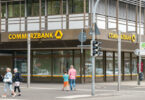Yesterday the Dutch Central Bank, De Nederlandsche Bank (DNB), published a blog post about their blockchain experiments. The conclusion was that the technology currently fails to meet the high demands of a financial market infrastructure (FMI). However, some of the more detailed comments apply specifically to Bitcoin’s technology.
Criticism matches Bitcoin weaknesses
The bank has been exploring and doing hands-on experiments for the last three years. Ron Berndsen initially headed up the trials, but he departed at the end of last year. In 2016 he outlined the initial experiments
in some detail. Firstly they cloned Bitcoin, and secondly, they experimented with Bitcoin-of-the-future, once it has mined the last coin.
In yesterday’s blog post, the bank’s primary criticisms seem to mirror Bitcoin issues. The bank said the main limitations are “capacity shortages, inefficiency caused by high energy consumption, and a lack of full certainty that a payment is completed.”
Bitcoin is known for its high energy consumption. Another feature is that you have to wait to have certainty that a transaction has completed. The energy inefficient mining aspect drives this. Bitcoins are mined every ten minutes. Until a transaction is included in a block, it is not verified, so that takes ten minutes. Even then it’s not entirely certain.
Every time a new Bitcoin is mined after your transaction, the certainty increases. For small payments ten minutes is fine. For more substantial amounts it’s suggested people wait at least an hour and sometimes as much as ten hours.
The bank said that it conducted some experiments without Bitcoin software, though it appears these used in-house developed software.
What problem is it trying to solve?
The bank noted that current payment systems are efficient, scalable, and offer legal certainty of completion. And their blockchain experiments did not.
One of the advantages they found with blockchain was some the consensus algorithms they tested withstood malicious actors. Hence there is potential to improve FMI resilience. The bank noted that DLT might offer efficiencies for multi-currency payments. Perhaps a nod to Ripple.
Conclusion
The bank’s conclusion re-iterated their Bitcoin focus. “Bitcoin is interesting and promising, and future algorithms may well offer improved compliance with FMI requirements.” The DNB plans to continue to explore the technology, conduct experiments, and engage with new and incumbent market players.






